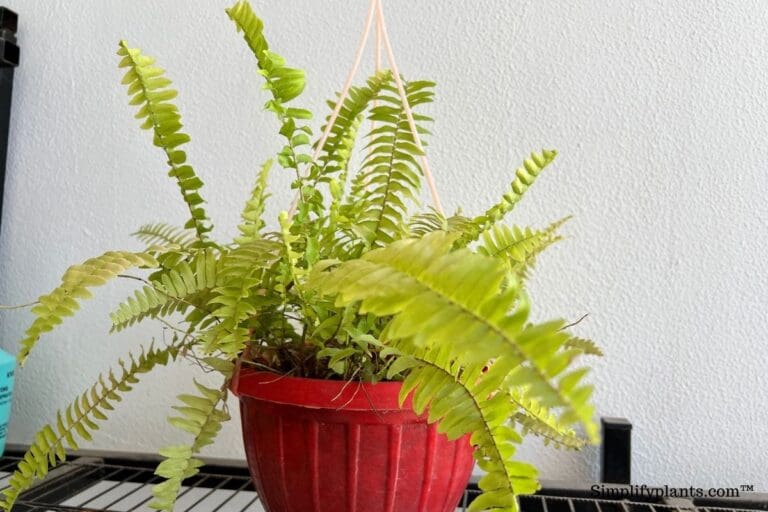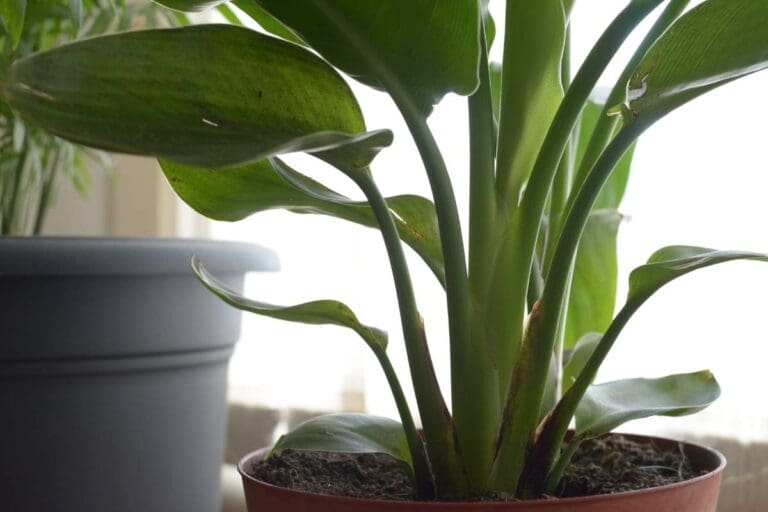Philodendron Leaves Turning Brown? 7 Causes & Fix
Philodendrons come in different types – climbing and non-climbing. All these plants are well-known for their unique leaves that are green or variegated. However, these beautiful leaves can turn brown if you don’t take proper care of your philodendron or do something that does not suit the plant’s requirements.
So, if you are struggling with brown leaves in your philodendron, then you are in the right place. In this article, we will discuss why your philodendron is turning brown and how you can fix it.
Overwatering, root rot, poor-quality water, and pest infestation are primary causes of brown leaves in philodendrons. Move your philodendron plant to a bright spot, water only when the soil feels 80% dry, and spray some neem oil solution once a month to prevent brown leaves in the philodendron.
Let’s understand the different reasons in detail and their solutions so that once you identify the problem, you can start fixing it. Make alterations in your care routine so that your philodendron doesn’t face similar problems in the future.

Please note: Simplify Plants is reader-supported. Some links in the post are affiliate links and I get a commission from purchases made through links in the post.
Different types of browning and their causes
You will notice different problems in the philodendrons, such as brown tips, brown edges, brown spots, or complete brown leaves.
All these problems have different causes. Let’s check them out.
Brown spots on leaves
Sometimes there are small or large brown spots on the leaves of your philodendron, and there can be several causes of the same.
Causes:
- Overwatering is a common cause of brown spots on leaves. The roots get suffocated due to overwatering, and the leaves develop brown spots due to a lack of photosynthesis.
- If you use any commercial cleaner to clean your plant’s leaves, the harmful chemicals in the cleaner can cause brown spots.
- Direct sunlight is not ideal as it will burn the leaves of your philodendron, due to which they might get discolored and develop brown spots.
- Root rot is caused due to overwatering, and this can also lead to brown spots on the leaves.
Solution:
- Inspect the plant thoroughly and try to figure out what is wrong with it.
- Stop watering the philodendron for a few days to let the soil and roots get dry.
- Provide bright and indirect light but keep the plant away from direct sunlight.
- Add some fungicides to the soil to prevent fungal infections.
- If the plant has root rot, you must prune the leaves with brown spots and repot the plant using a new pot and fresh soil mix.
- Keep your philodendron away from other plants if it has root rot or pest infestation.
Brown tips in the leaves of philodendron
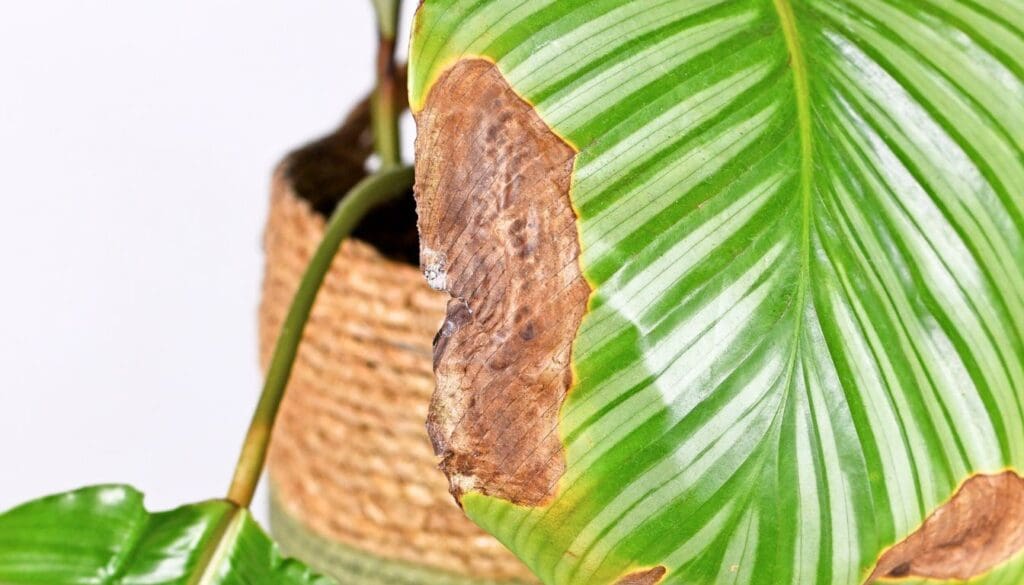
If you start noticing brown tips on the leaves of your philodendron, you should not neglect it as it can lead to more severe problems.
Causes:
- Overwatering leads to different kinds of browning, including brown tips. When the soil remains moist for longer, bacteria and fungus develop around the roots and cause brown tips in the leaves.
- If you don’t give sufficient water to your philodendron, it will become dehydrated, due to which you will notice brown tips in the leaves.
- If you place the philodendron too close to heaters or radiators, the hot and dry air can lead to brown tips in the leaves of your philodendron.
- Over-fertilization is one of the main reasons behind brown tips, as the excess salt build-up due to over-fertilization can burn the leaves and make the tips brown.
- Direct sunlight hits the leaves and burns them, and brown tips are a sign of it.
- A root-bound philodendron can also have brown tips in the leaves.
Solution:
Prune the leaves that have brown tips. These leaves will not recover, and we don’t want the philodendron to waste its energy on these leaves.
Water your philodendron after checking the top two layers and ensuring it is dry. Avoid following any watering schedule blindly, as that can lead to overwatering.
Keep your philodendron away from heaters or radiators, as the hot air is very harmful to the plants.
You must repot your philodendron every 2-3 years to prevent the plant from becoming root-bound. Use a larger pot and a fresh soil mix for repotting.
Place your philodendron in a bright spot where it gets sufficient indirect light and stays away from exposure to direct sunlight.
Completely brown leaves
Leaves that have turned entirely brown indicate that something is severely wrong with your philodendron and require your immediate attention.
Causes:
- Root rot is a common reason for all kinds of browning, and when the entire leaf turns brown, you need to check the soil and the roots.
- If you place your philodendron under direct sunlight for an extended period, its leaves will have brown spots that will grow larger and make the entire leaves brown.
- Temperature fluctuations can make the leaves brown.
- An underwatered philodendron living with dry soil and no water will not have enough energy to remain healthy, and its leaves will turn brown.
Solution:
First, you must get rid of the brown leaves by pruning them.
Place the plant in indirect light and protect it from direct sunlight by keeping it a few feet away from the window or in the shade if it is outside.
Water your philodendron when the top 2 inches of the soil have become dry, and don’t water blindly.
Avoid exposing your philodendron to temperature fluctuations that can shock or stress the plant.
In root rot, repot the philodendron immediately in a pot with drainage holes and a well-draining soil mix that supports good aeration.
Why are my philodendron leaves turning brown?
Several problems can lead to brown leaves in philodendron. Let’s understand all the problems in more detail.
1) Lighting issues
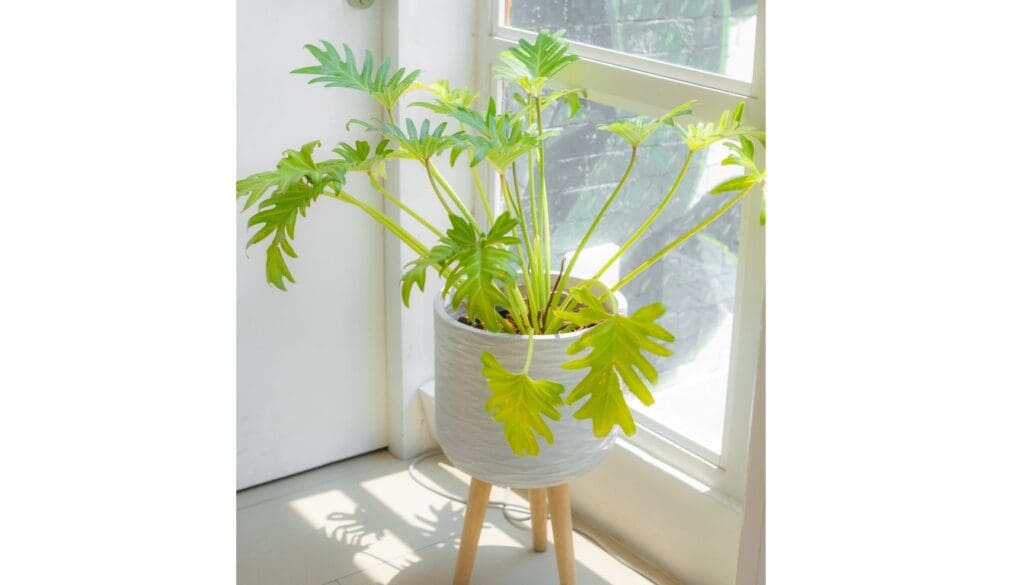
Low light:
The philodendrons can live in low light conditions as they are very resilient. However, low light will lead to slow growth and falling leaves.
The philodendrons require medium to bright lighting conditions to thrive. If you provide sufficient indirect light to your philodendron, it will grow well and remain healthy.
Rotate the plant after every few days so that the plant gets light on all sides.
If your philodendron is not getting enough light and the leaves turn brown, you should use artificial lights and place the plant below it.
Direct sunlight:
If your philodendron is exposed to direct sunlight, you need to look for a new spot for your philodendron.
Find a spot where the plant will get indirect sunlight. Along with proper lighting, don’t forget to water the plant properly to remain hydrated.
Too much direct sunlight can make the leaves pale and yellow, turning brown and then falling off.
If your philodendron is growing outdoors, place it under some kind of shade so that the plant does well.
Also read: What Kind Of Light Does A Philodendron Need? (Light Requirements)
2) Watering issues
If you do not follow a watering schedule or follow one blindly, you will end up underwatering or overwatering your philodendron.
When you overwater your philodendron, the soil remains moist, causing root rot, brown leaves, pest infestation, and many other problems.
Underwatering causes slow growth, droopy leaves, brown tips in leaves, and falling of leaves.
If overwatering is the problem behind the brown leaves, you must stop watering and place the plant in bright indirect light so that the soil can get dry.
Once the soil dries, avoid watering without checking the soil. The best way to water your philodendron is to make sure that the top two layers of the soil have become dry.
If you follow a watering schedule blindly, you can mistake watering the plant when the soil is still moist.
You can check the soil’s moisture with the help of a moisture meter or skewer or by simply inserting your finger into the soil.
You can also pick up the plant and feel the weight of the pot. If the soil is still wet, the pot will feel heavy, and you should wait for some days to let the soil dry.
If your philodendron is placed in a terracotta pot, you can touch the lower part of the pot to understand if it is wet or if the pot appears dark; it means that the soil is still moist.
Philodendrons like their soil to remain slightly moist, and for that, you must not let the soil get bone dry. You should water whenever you notice that the top layers of the soil have started feeling dry.
Following a watering schedule helps as you won’t forget to water your plant, but you should not water without checking the soil in the first place.
You should reduce the watering in winter as the plant’s water requirement reduces as it enters the dormant state.
Also read: How Much Water Does A Philodendron Need? (Water Requirement+How Often)
3) Fertilizing issues
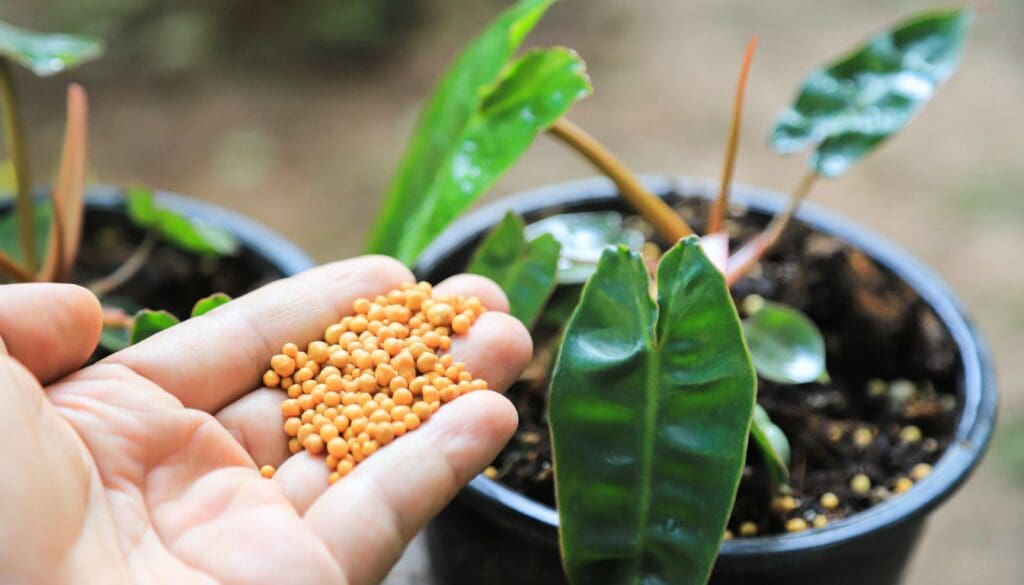
The philodendrons love sound and light feeding during the growing season as it helps boost the growth of the plant.
However, problems arise when you feed too much fertilizer to your philodendron.
An over-fertilized philodendron will have excess fertilizer build-up in the soil, leading to brown tips in the leaves.
Therefore, you should fertilize your philodendron once a month during the growing season. Use a 20:20:20 fertilizer and dilute the prescribed dose to half-strength so that it is not too much for your philodendron.
The ideal time to fertilize your philodendron is in the summer and spring seasons, and reduce the fertilization in fall. Avoid fertilizing in the winter season, as the plant doesn’t need any fertilizer in the dormant state.
Also read: What Kind Of Fertilizer For Philodendron? (Best Fertilizer+Fertilizer Ratio)
4) Soil issues
If you use soil that is not well-draining, it will retain more water than required, and the leaves will turn brown due to the excess moisture.
A soil that remains soggy due to excess moisture retention will not support air circulation, and the roots will start rotting due to a lack of oxygen.
These will invite pests and create a perfect environment for fungal infections resulting in brown leaves, slow growth, and many diseases.
To fix this issue, you must repot your philodendron in a well-draining soil mix.
You can use a cactus mix or mix peat-based soil with perlite to make well-draining soil. Put this soil in the pot and place your philodendron in it.
Add some fungicides to the soil to prevent pest infestation and fungal diseases. Use the correct-sized pot so that the roots don’t get suffocated.
Avoid watering without checking the soil’s moistness.
Also read: What Type Of Soil Does A Philodendron Need? (Best Soil Mix)
5) Humidity issues

The philodendrons enjoy high humidity in their native lands, and it will require more humidity than most of the houseplants.
However, if the humidity levels drop down, the plant will develop problems such as dry and brown leaves.
You must increase the humidity levels for your philodendron by adding a humidifier or grouping it with other plants. You can place it in the bathroom, kitchen, or basement.
Place the plant away from heaters, radiators, and furnaces that affect the plant with dry air.
6) Temperature fluctuations
Houseplants like to remain in a controlled environment where the ideal temperatures are maintained.
Similarly, the philodendron requires constant temperature levels, and fluctuations can stress the plant and cause many problems.
Temperature fluctuations can lead to wilting leaves, pale leaves, and brown leaves.
Keep your philodendron away from cold drafts and low temperatures during winter. Don’t place the plant near the window or outside in winter.
If the temperature is too high, you should mist your philodendron to add some moisture to the plant.
Water the plant less if the temperature levels are low and increase the watering when the temperature remains high.
7) Pest infestation

Pests are a serious problem as their population increases very fast, and they absorb all the nutrition from the plant, making it weak and causing other problems in it.
Pests cause brown leaves, spots and slow growth in your philodendron.
Pests thrive in overwatered soil that doesn’t receive enough light. So, you need to relocate your philodendron to a brighter spot that gets sufficient indirect light.
Wash the plant thoroughly and try to remove as many pests as possible.
Spray neem oil solution all over the plant and continue this for two weeks. Prune the infected parts of the plant.
Avoid over-fertilizing and overwatering your philodendron.
Should I remove the brown leaves from the philodendron?
Yes, the brown leaves will not become healthy and will just burden your philodendron if you don’t remove them.
So, you should prune the brown leaves with sharp and sterilized pruners.
If you notice brown tips, you can just cut the brown part and leave the healthy part of the leaves on the plant.
Removing the brown and dead leaves will make space for new and healthy growth of the philodendron.
Ref: Wikipedia.
Recommended Garden Supplies
| Product Image | Our Recommended Gardening Supplies | Check Offers! |
|---|---|---|
Top Top
Top
Top
Top
Top
Top
Top
Top | rePotme Houseplant and Tropical Classic Potting Soil Mix | Check Offer On Amazon |
 Top
Top
Top
Top
Top
Top
Top
Top | Espoma Organic Indoor Plant Food | Check Offer On Amazon |
 Top
Top
Top
Top
Top
Top
Top
Top | GooingTop LED Grow Light 6000K Full Spectrum Clip Plant Growing Lamp | Check Offer On Amazon |
 Top
Top
Top
Top
Top
Top
Top
Top | Soil Moisture Meter | Check Offer On Amazon |
 Top
Top
Top
Top
Top
Top
Top
Top | Govee Hygrometer Thermometer, Bluetooth Enabled! | Check Offer On Amazon |
 Top
Top | LEVOIT Humidifiers for Large Room(Best For Plants) | Check Offer On Amazon |
 Top
Top
Top
Top
Top
Top
Top
Top | Upgraded DIY Automatic Drip Irrigation Kit, 15 Potted Houseplants Support | Check Offer On Amazon |
 Top
Top
Top
Top
Top
Top
Top
Top | Stainless Steel Heavy Duty Gardening Tool Set | Check Offer On Amazon |
 Top
Top
Top
Top
Top
Top
Top
Top | Bonide Insecticidal Soap | Check Offer On Amazon |
 Top
Top
Top
Top
Top
Top
Top
Top | Bonide 32 oz Spray Neem Oil for Organic Gardening | Check Offer On Amazon |
 Top
Top
Top
Top
Top
Top
Top
Top | Garden Safe Fungicide | Check Offer On Amazon |


